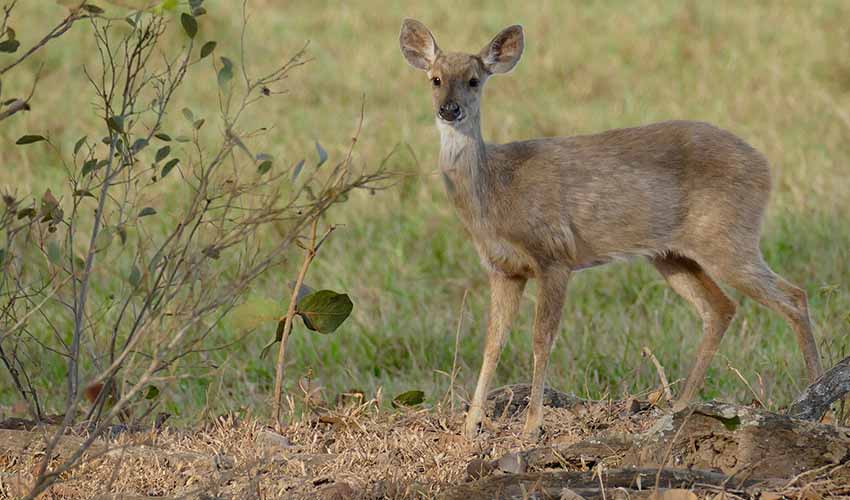One of the more adaptable and better-known species in the brocket deer family, found across a wide range of South American countries, including Argentina, Brazil, Bolivia, Paraguay, and Uruguay. Unlike many of its forest-dwelling cousins, the gray brocket is more tolerant of open habitats, often living in savannas, dry forests, shrublands, and even near agricultural areas. This makes it somewhat easier to observe than the more elusive rainforest species, though it still prefers to keep a low profile. Its adaptability to different landscapes and its wider distribution set it apart from other members of the Mazama genus, many of which are more habitat-restricted and harder to study.
Physically, the gray brocket deer has a coat that is generally a grayish-brown, with lighter fur on the underbelly and inside of the legs. The name “gray brocket” comes from this muted coloring, which provides excellent camouflage in dry, scrubby environments. Like all brocket deer, the males have short, unbranched antlers—typically just a few inches long—which they shed and regrow annually. Their faces are slightly more elongated than those of their forest cousins, and they often have a gentle, wide-eyed expression that makes them appear cautious and alert.
Behaviorally, gray brockets are solitary or found in pairs, especially during mating season. They are crepuscular, meaning most active during early morning and late afternoon, when light is low and temperatures are cooler. They feed on a varied omnivorous diet, though primarily herbivorous, including fruits, leaves, twigs, and occasionally fungi or fallen seeds. In human-influenced areas, they may even browse in croplands, which sometimes leads to conflict. Despite this, they remain skittish and will flee quickly at the slightest sign of danger, often darting into thick vegetation where their gray coats help them disappear from view.
Distribution
 Argentina
Argentina Bolivia
Bolivia Brazil
Brazil Paraguay
Paraguay Uruguay
UruguayAnything we've missed?
Help us improve this page by suggesting edits. Glory never dies!
Suggest an editGet to know me
Terrestrial / Aquatic
Altricial / Precocial
Polygamous / Monogamous
Dimorphic (size) / Monomorphic
Active: Diurnal / Nocturnal
Social behavior: Solitary / Pack / Herd
Diet: Carnivore / Herbivore / Omnivore / Piscivorous / Insectivore
Migratory: Yes / No
Domesticated: Yes / No
Dangerous: Yes / No




